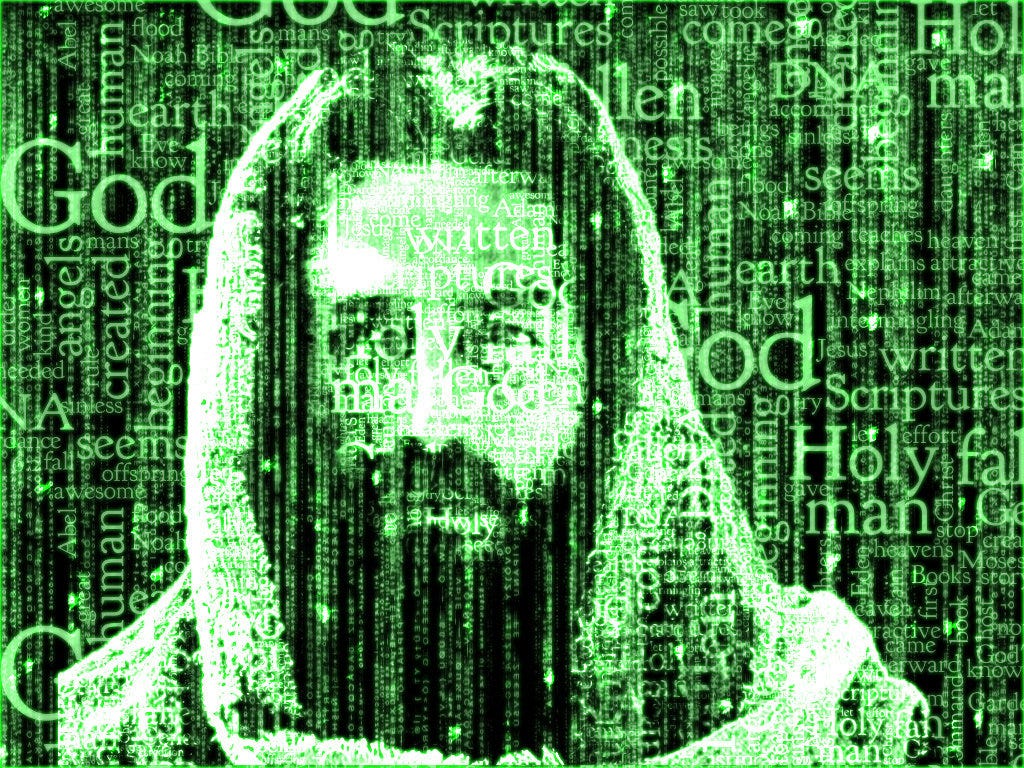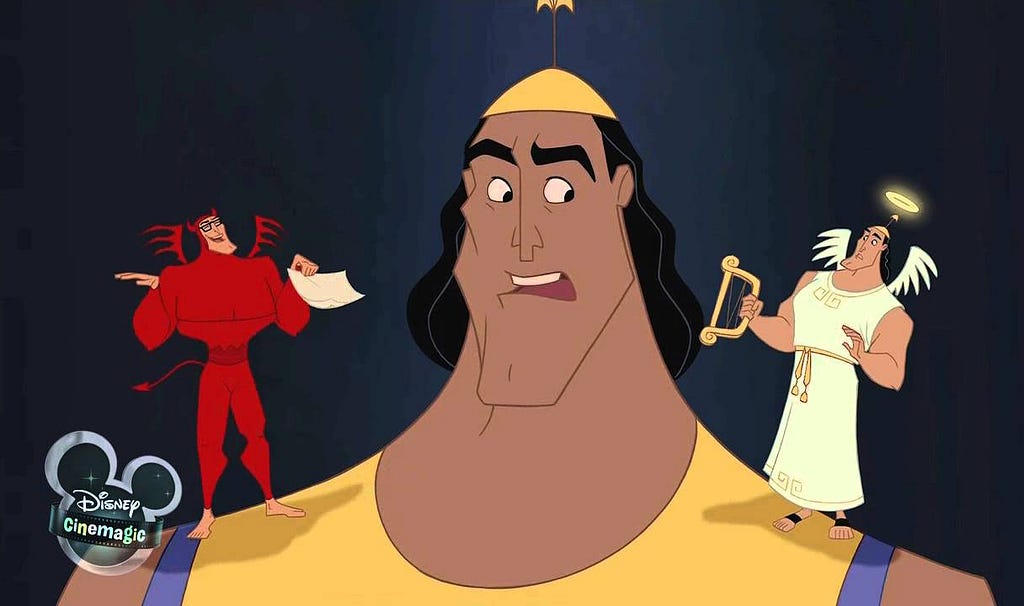Latest news about Bitcoin and all cryptocurrencies. Your daily crypto news habit.
Religion and the Simulation Hypothesis: Is God an AI?
Do Video Games and the Matrix provide a scientific basis for religious beliefs? (part 1)
NOTE: On the 20th anniversary of the release of the Matrix, MIT and Stanford grad Rizwan Virk is releasing his book, The Simulation Hypothesis: An MIT Computer Scientists Shows Why AI, Quantum Physics and Eastern Mystics Agree We Are In a Video Game, which explores the scientific, philosophic and religious basis of this theory. This is one in a series of articles which explore different aspects of the simulation hypothesis — visit www.zenentrepreneur.com to learn more.
For hundreds of years, many well-known scientists weren’t afraid to speak of God (or the importance of consciousness) in their writings, ranging from Newton to Descartes to Einstein. This may partly have sprung initially from not wanting to share the fate of scientists like Galileo whose research was suppressed by a dominant Catholic Church. Over time, though as the Church became less dominant, I suspect it stemmed from a genuine belief that while science was good at making observations, its reductionist tendencies might never be able to explain the unseen worlds of consciousness often explored by religion. As a result, scientists have steered clear of religion as something that is “not scientific” and should only be studied by sociologists.
Recently, a theory has emerged which is causing a lot of scientists to look again at age-old religious concepts, and both video games and science fiction have provided a key part of this new model. This theory, the simulation hypothesis, is the idea that what we perceive as physical reality is actually a computer-generated simulation — like a super sophisticated video game, as depicted in the movie the Matrix.
This month marks the 20th anniversary of the release of this groundbreaking film. While the film had many religious overtones (the emergence of a Messiah to save the human race), it emerged as cultural phenomenon beyond most other films of its day because of its central thesis: that we live in a simulated world and that there is another world beyond what we can see.
This is the first of two articles that examine how many of the ideas put forth by the World’s religions -both Eastern and Western — are not only consistent with the simulation hypothesis, but that this new theory may find a way to bridge the ever-widening gap between religion and science. Part I will focus on the Western religions, specifically God and his Angels and the idea of an afterlife, while Part II will focus on the Eastern religions, specifically about the idea of maya, or illusion, karma and reincarnation.
We’ll see how these religious ideas take on a whole new meaning when viewed through the lens of the simulation hypothesis. In fact, this theory may provide a scientific and technological basis for all of these arguments, showing that the unseen worlds described by the world’s religions may be more scientific than we thought!
 Does the Matrix show us a scientific model for religions?
Does the Matrix show us a scientific model for religions?
The Matrix, its Religious Overtones and its Central Idea
To recap, in The Matrix, Neo (played by Keanu Reeves), is a computer hacker who discovers mysterious references to something called “the Matrix” online. He eventually meets Morpheus (played by Laurence Fishburne) who explains: “Unfortunately, no one can be told what The Matrix is. You’ll have to see it for yourself.”
Even if you haven’t seen the movie, you’ve probably heard of its most iconic scene: Morpheus gives Neo a choice to take “red pill” to wake up and see what the Matrix is, or take the “blue pill” and keep living his life. Neo takes the red pill and wakes up in the real world to find that what he thought was reality was actually a sophisticated computer simulation — basically an ultra-realistic video game!
Video Games, Virtual Reality and the idea of a Simulated World
The simulation hypothesis was once the domain of science fiction (the creators of the Matrix, the Wachowski’s, claimed to have been inspired by the work of science fiction writer Philip K. Dick among others).
Today, this idea is taken seriously by scholars of philosophy (Oxford’s Nick Bostrom laid out the Simulation Argument in a 2003 paper), physicists (Neil deGrasse Tyson, host of the new Cosmos, and the late Stephen Hawking both took the idea seriously), and most of all by today’s computer scientists.
Why is this idea being taken more seriously now? It’s because of the evolution of video games and AI technology. In fact Elon Musk, founder of Tesla and SpaceX founder, made waves with his statement in 2016 explaining the logic: Forty years ago, the state of the art in video gaming was two lines and a dot, in Pong, which was the first widely available arcade game. Today’s MMORPGS (massively multiplayer online role-playing games) like World of Warcraft and Fortnite, have created shared virtual worlds inhabited by characters controlled by millions of players.
If the fidelity of virtual reality and augmented reality continues to improve, Musk speculated, that we will soon be unable to distinguish between “physical” and “virtual reality”.
While the scientists like Bostrom said little about video games, and Musk said little about uploading and downloading of consciousness, if we take these trend to their logical conclusion, we end up at a point where the simulation hypothesis sounds a lot like what all the religious traditions have been telling us all along!
Western Central Tenet #1: And God Said: Let there Be Light!
Let’s start with the Western traditions (namely, Judaism, Christianity and Islam), or as they are referred to the Abrahamic line of religions. They share many traits, not the least of which is respect for the Old Testament, the oldest part of the Bible.
Genesis from the Old Testament, begins with God saying: “Let there be light, and then there was light.” This is followed by the revelation that God created the Earth in 6 days and then rested on the 7th.
This is of course one of the areas that’s ridiculed by scientists the most. Of course, it takes more than 6 days to form a planet, doesn’t it? Our best estimates are that the Earth is billions of years old. Moreover, if the Earth wasn’t yet created, how could you possibly measure a period of 6 days?
With the introduction of the simulation hypothesis, however, this part of genesis starts to take on new meaning. If we begin to think about the physical world as a computer-generated reality, rather than a physical reality, then this description doesn’t sound so outlandish to scientists. In the world of video games, it can take about 6 seconds to “spin up” a new server or new planet inside a video game world. The groundbreaking video game, No Man’s Sky, used fractal algorithms to generate unique flora and fauna for 18 quintillion planets. All computer programs, including simulations have the idea of clockspeed — which is the minimum time increment that a particular step can take. Even though we might think of it as instant, it takes some amount of time to generate any simulated world.
Time increments inside simulated worlds are set by some “generation” or “step” which is a multiple of the underlying clockspeed of the CPU. For example, if the internal clock speed was 1 millisecond, then it would be impossible to measure less than 1 millisecond. But within a simulation, a “day” or “year” or “step” could be 6 milliseconds or 6000.
Perhaps more important is the action taken by God to create the world — in religious traditions, light seems to have a special status.
 Figure 1: Light plays a fundamental role in Religion, Physics and Video Games
Figure 1: Light plays a fundamental role in Religion, Physics and Video Games
As we look at modern physics, we have found that everything we thought of as the physical world has been proven to be mostly (99%) empty space. Solids vs. liquids vs. gasses are just collections of atoms and molecules moving differently. This lends credence to the idea that the physical universe really doesn’t exist — what exists is an arrangement of information that represents the atoms and the molecules.
Einstein’s theory of relativity found that that only true constant in physics is light. Light is special, though no one knows why. In fact, you might say that light is the only true “fundamental” in physics. We haven’t been able to figure out why.
Within computer simulations also, light is also special. In fact, computer graphics consists of pixels based on information — these pixels are “rendered” into the physical world that exists inside the game — what I like to call “The Rendered World”. The rendering is all about lighting up pixels based on different values to present different colors — to turn a dark screen into a “world”!
Why would the only fundamental in physics be the speed of electromagnetic radiation, which is also the speed at which we send signals inside and between computers? Moreover, the Western religions are telling us explicitly that God created the world in the same way that we would render a video game world — by “turning on the lights” of the pixels of the physical world?
Western Central Tenet #2: Angels and the Afterlife in Video Games
Most religions are concerned with what happens to us after death. In fact, you might say that this is the central issue and main reason to have religion in the first place! In the Western religious traditions, one of the main teachings is that we have an immortal soul which is judged based upon our actions in this life. This judgement is based on reviewing what we do in the “here” in the physical world, and this behavior determines where we end up in the “hereafter”, or the afterlife.
Depending on which particular branch of the Western traditions we are looking at, there are variations on this same basic theme (purgatory for example in the Catholic Church vs the Eastern orthodox). In pretty much of all of these cases, there is what we might call Heaven and Hell. In Judaism (again depending on specific interpretations) there is Heaven which is Gen Eden(the Garden of Eden), and Hell which is called Gen Hanum. In Islam, Heaven is called Jannah (basically the Garden of Milk and Honey), and as if to emphasize it’s the same place as the Old Testament, Hell uses almost exactly the same phrase: Jahannam.
How is this determination done exactly? In Islam, which is the newest of these religions, we are given more specifics. In the Koran (and the Hadith, the second most authoritative text), it specifically mentions that each of us has a “Scroll of Deeds”. Not only does God review our Scroll of Deeds with us after death, but he also shows us the consequences of our actions. Because we may not even realize that some of our deeds had repercussions beyond what we know, this is not a simple process but requires broadening our perspective.
 Figure 2: A Depiction of a Recording Angel from Washington DC
Figure 2: A Depiction of a Recording Angel from Washington DC
Who is recording information in this scroll of deeds, and how is it shown to us? In Islam, the recording angels, theKiramin Kitabare two angels which record our “good deeds” and “bad deeds”. Now you may have seen the modern cartoons which show an angel and a devil on each shoulder. It turns out the source of this picture is most likely the Islamic traditions, where the prophet tells the faithful that each person has two entities — an angel and a jinn, one on each shoulder which are there to guide us towards good or bad deeds.
In the Christian traditions, the recording angel is the same as our guardian angels, and in both the Christian and Jewish traditions, the “Book of Life” is substituted for the “Scroll of Deeds” (in one case it is simply a list of those who get into heaven, in other traditions it is pretty much the same as the Scroll of Deeds).
Could this really be happening — our deeds and their repercussions beings recorded somewhere (outside the rendered world) by Angels (or literally, messengers of God), and if so, how would it work?
 Figure 3: Are Angels Really AI daemons? A Disney representation
Figure 3: Are Angels Really AI daemons? A Disney representation
More importantly, what does all this have to do with video games and the Matrix?
It turns out quite a lot! It’s obvious that as we go through life, there is a “score” which is clearly visible to the angels (who are not in our physical reality but can see everything that is going on). You might say they are scorekeepers of a video game that we cannot see inside the “rendered world”.
Moreover, how would you record good deeds and bad deeds in a three-dimensional world? Again, video games give us the answer. In eSports video games today, key moves are recorded while the game is being played, by commentators who are outside the rendered world, watching it. Usually this is done automatically using screen capture software and sometimes streamed live.
Could these recording angels actually be some form of AI? Is it likely that with 7 billion of us on this planet, there are 14 billion angels whose simple job it is to record everything we do? Modern computer science provides the answer — it makes sense for AI to act like an automated screen capture which records the important points in our games and then plays it back to us.
Recently, I was part of a video game company which not only recorded key moments inside a 3d MMORPGs like World of Warcraft and League of Legends. it could play back the key moments so that we could review what we did right and what we did wrong. What was unique about this 3D recording was we could play it back the game not just from the point of view of the original player’s character, but from the point of view of any other player in the game! We could literally see the impact of our actions on the other players of the game!
Sound familiar? Not only is it like the Scroll of Deeds, but it’s also pretty much like what we call a Life Review. The term was coined by Dr. Raymond Moody when he was studying NDE’s (or Near Death Experiences). He found by studying thousands of cases of people who were “clinically” dead but were resuscitated, that they all reported similar elements in their experience. One of the most common was a Life Review, where an angel (or being of light) played back scenes from this person’s life to them. One of the most famous of these was Dannion Brinkley, who wrote the bestseller Saved by the Light. Not only did Dannion remember this Life Review — he went out of his way to say it was a 360 degree Life Review — you got to see not only your actions, but the consequences of your actions from the point of view of other people!
The golden rule was enforced by quite literally forcing you to see the “game” played back from other player’s characters!
In fact, some kind of 3D screen capture, with some AI, may be the only way to accomplish what is described to us in the religious texts and is one of the key precepts of these religions!
Recording angels are more likely messengers of God in a literal sense that are tasked with watching what we do. How do we send messages today — through automated computer programs of course. In computer science, code that runs on its own as a separate process which monitors what we are doing are often referred to as Daemons, the Greek term for Demons. This may be more appropriate than the original namers realized — though perhaps they should be called Seraph, the Greek term for angels!
These aren’t the only things happening with God that are better handled by an AI than an all-powerful deity — think of billions of prayers coming into a central system — how would God, or Jehovah as he is called in the Old Testament, deal with this many prayers? An intelligent system of “angels” might be the only way to do this.
This initial analysis shows that the simulation hypothesis, the central theory which emerged from the release of the Matrix 20 years ago, may provide a scientific model for the things that prophets and religious texts have been telling us all along: that we are in a simulated world, like a video game, and that there are beings (or processes) outside of this world that are watching everything we do.
In Part 2, we will explore some of the ideas that underlie some of the Eastern religious traditions and show how the simulation hypothesis may provide the crucial model linking all of these traditions into modern science.
NOTE: On the 20th anniversary of the release of the Matrix, MIT and Stanford grad Rizwan Virk is releasing his book, The Simulation Hypothesis: An MIT Computer Scientists Shows Why AI, Quantum Physics and Eastern Mystics Agree We Are In a Video Game, which explores the scientific, philosophic and religious basis of this theory. This is one in a series of articles which explore different aspects of the simulation hypothesis — visit www.zenentrepreneur.com to learn more.
Religion and the Simulation Hypothesis: Is God an AI (Part I)? was originally published in Hacker Noon on Medium, where people are continuing the conversation by highlighting and responding to this story.
Disclaimer
The views and opinions expressed in this article are solely those of the authors and do not reflect the views of Bitcoin Insider. Every investment and trading move involves risk - this is especially true for cryptocurrencies given their volatility. We strongly advise our readers to conduct their own research when making a decision.